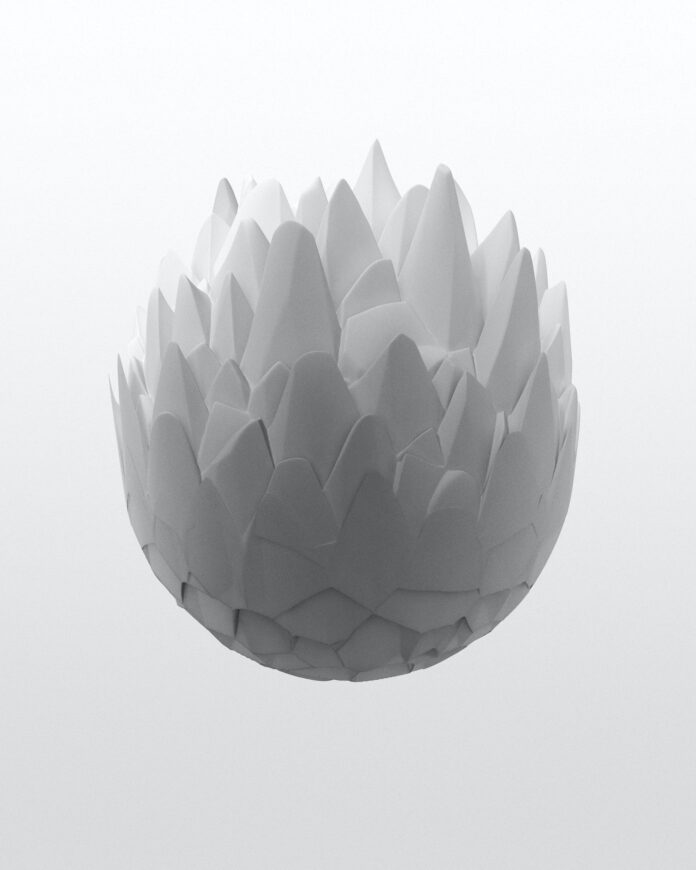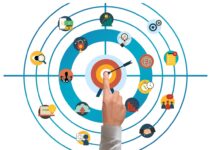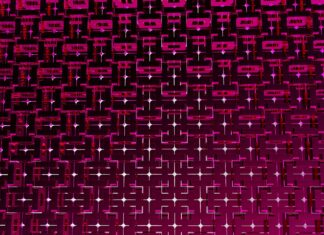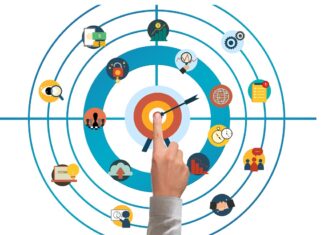The fusion of the Internet of Things (IoT) with the healthcare industry has ignited a revolution in the way we perceive, manage, and deliver healthcare services. This article embarks on an extensive exploration of IoT in Healthcare, adhering to an unconventional structure without the use of headings, points, or key features, to provide an in-depth analysis of this transformative field.
The deployment of IoT technology in healthcare is reshaping the landscape of medical services, ushering in a new era of patient care and treatment. The essence of IoT in healthcare lies in the interconnectedness of devices and data, enabling healthcare providers to monitor, diagnose, and treat patients more effectively and proactively. By leveraging the power of IoT, healthcare is evolving into a system that is data-driven, patient-centered, and highly efficient.
IoT in Healthcare represents a paradigm shift in the way medical professionals access and utilize patient data. Traditional healthcare systems have often been siloed, with data existing in isolated pockets, making it challenging to get a holistic view of a patient’s health. IoT devices bridge these gaps by continuously collecting and transmitting data to centralized systems. This data can encompass a wide range of information, from vital signs and medication adherence to activity levels and environmental factors. By aggregating and analyzing this data, healthcare providers gain a comprehensive understanding of a patient’s health, enabling more informed and timely decisions.
One of the most transformative applications of IoT in healthcare is remote patient monitoring. IoT devices, such as wearable fitness trackers, smartwatches, and specialized medical sensors, allow patients to be continuously monitored outside of healthcare facilities. This has profound implications for the management of chronic diseases, post-surgery care, and early detection of health issues. For example, individuals with chronic conditions like diabetes can use IoT devices to track their glucose levels, and the data can be transmitted to their healthcare providers in real-time, enabling immediate adjustments to treatment plans.
IoT also plays a pivotal role in the development of smart homes and healthcare environments. Smart devices integrated into the home, like connected scales, blood pressure monitors, and environmental sensors, create an environment that actively contributes to a patient’s well-being. These devices not only provide data but also facilitate immediate actions, such as adjusting room temperature or activating air purifiers in response to air quality data. This level of proactive care is revolutionizing the way patients experience their healthcare journey.
IoT-driven healthcare is also enhancing the patient experience within medical facilities. IoT devices can improve the efficiency of administrative processes, such as check-in and appointment scheduling. Smart infrastructure within healthcare facilities, like location-based services and wayfinding apps, can guide patients and visitors seamlessly to their destinations. In emergency situations, IoT sensors and devices can expedite the response of medical personnel, improving patient outcomes.
Furthermore, IoT technology is facilitating telemedicine and telehealth services, particularly in remote or underserved areas. These services enable patients to consult with healthcare providers via video calls, making healthcare more accessible and convenient. IoT devices can play a role in these interactions, providing real-time data to healthcare professionals, enhancing the quality of remote diagnoses and treatment recommendations.
IoT in Healthcare is not limited to patient monitoring and administrative improvements; it extends to the management of medical equipment and supplies. IoT-enabled asset tracking systems ensure that medical devices and supplies are readily available when needed, preventing delays in patient care and minimizing equipment downtime. This not only improves the quality of healthcare but also optimizes resource utilization, reducing costs.
One of the most critical aspects of IoT in Healthcare is data security and privacy. The continuous generation and transmission of sensitive patient data require robust security measures to protect against unauthorized access or data breaches. Healthcare organizations must invest in advanced encryption, authentication, and data protection mechanisms to safeguard patient information. Furthermore, strict compliance with healthcare data regulations, such as the Health Insurance Portability and Accountability Act (HIPAA) in the United States, is crucial to maintaining patient trust and upholding legal standards.
IoT in Healthcare also presents opportunities for predictive analytics and artificial intelligence (AI) applications. By harnessing the massive amounts of data generated by IoT devices, healthcare providers can develop predictive models that anticipate disease outbreaks, identify at-risk patients, and optimize treatment plans. AI-driven diagnostic tools can analyze data from various sources to assist healthcare professionals in making more accurate and timely diagnoses.
The proliferation of IoT in Healthcare is not without its challenges. The vast amount of data generated by IoT devices requires robust data storage and processing capabilities. Healthcare organizations must invest in high-capacity, secure data centers and cloud solutions to manage this data effectively. Furthermore, healthcare professionals must be adequately trained to use IoT technology and interpret the data it generates. The integration of IoT into existing healthcare systems can also be complex, requiring substantial investments in infrastructure and technology upgrades.
Moreover, as healthcare systems become more dependent on technology, there is an increased vulnerability to cyberattacks. Healthcare organizations must continually update their security measures to protect against data breaches and disruptions in patient care.
The ethical implications of IoT in Healthcare are also a significant consideration. Balancing the benefits of continuous monitoring and data collection with patient privacy and consent is a critical ethical dilemma. Ensuring that patients are well-informed about the data collected
The integration of IoT in Healthcare has unleashed a wave of innovation, redefining the boundaries of what’s possible in patient care and medical practice. It’s not just about the data and the devices; it’s about a profound transformation in the very essence of healthcare, one that touches upon human experience, medical ethics, and the evolution of the healthcare ecosystem.
IoT in Healthcare is reimagining the very nature of the patient experience. Traditionally, healthcare was often an episodic endeavor, characterized by occasional visits to medical professionals. IoT technology is changing this dynamic, making healthcare a continuous, dynamic process. Patients are no longer passive participants; they are active partners in their health management. IoT devices empower individuals to monitor their health in real time, taking a more proactive role in disease prevention and management.
The patient experience is further enhanced by the convenience and accessibility of IoT in Healthcare. Telemedicine, made possible by IoT technology, enables patients to consult with healthcare providers from the comfort of their homes. This eliminates the need for lengthy commutes and waiting rooms, making healthcare consultations more convenient and less stressful. Patients in remote or underserved areas can now access the expertise of specialists and receive timely medical advice.
Moreover, IoT technology is making healthcare more personalized. The data generated by IoT devices enables healthcare providers to tailor treatment plans to an individual’s specific needs. It’s not a one-size-fits-all approach; it’s precision medicine. For example, diabetes management can be fine-tuned based on real-time glucose level data, ensuring that treatment is optimized for each patient. This level of personalization is reshaping healthcare outcomes and enhancing the patient’s sense of being seen and heard.
IoT in Healthcare also bridges the gap between generations. In an era where technology often creates generational divides, IoT devices in healthcare are serving as a common language. Patients of all ages, from digital natives to those less familiar with technology, are finding common ground through the use of health-related IoT devices. Families and caregivers can engage with elderly relatives and help them manage their health using user-friendly IoT solutions. It’s a unifying force in healthcare, fostering communication and collaboration across generations.
The empowerment of patients through IoT technology extends to chronic disease management. Patients with conditions like hypertension, heart disease, or respiratory disorders can use IoT devices to self-monitor and manage their conditions. This newfound autonomy reduces the burden on healthcare facilities, empowers patients, and ultimately leads to better health outcomes. IoT in Healthcare doesn’t just treat diseases; it teaches patients to manage their health, fostering a sense of control and confidence.
In the realm of preventive care, IoT technology has unlocked new possibilities. By continuously monitoring vital signs, tracking physical activity, and assessing environmental factors, IoT devices provide early warnings and opportunities for intervention. For example, wearables can detect irregular heart rhythms, prompting patients to seek medical attention before a serious issue arises. This capacity for early detection and intervention has the potential to revolutionize healthcare by shifting the focus from reactive treatment to proactive prevention.
The integration of IoT in Healthcare also aligns with the broader trend of patient-centered care. It puts the patient at the center of healthcare decisions, promoting autonomy and shared decision-making. Patients have access to their health data and are actively involved in treatment discussions. They can provide their healthcare providers with more detailed information about their symptoms and health history, improving the accuracy of diagnoses and treatment plans.
Moreover, the patient experience is evolving to be more empathetic and compassionate. IoT technology allows healthcare providers to be more connected to their patients, offering support and guidance remotely. Patients no longer feel isolated; they have a lifeline to healthcare professionals who can offer reassurance and advice. The role of healthcare providers is shifting from the occasional “fixer” to a continuous source of support and care.
The value of IoT in Healthcare is not just in data collection but in data storytelling. Patients and healthcare providers are no longer overwhelmed by raw data; they receive insights and actionable information. For example, a patient can receive a notification that their blood pressure is trending higher than usual, along with advice on lifestyle changes to address the issue. This transformation of data into meaningful narratives is fostering health literacy and informed decision-making.
Ethics and patient consent are also integral to the IoT in Healthcare narrative. The continuous collection of health data raises ethical questions about privacy, consent, and data ownership. Patients must have control over their data and understand how it is used. This ethical dimension requires ongoing dialogues and the development of policies and regulations that protect patient rights while promoting the benefits of IoT technology.
The journey of IoT in Healthcare is marked by an evolving partnership between humans and machines. Healthcare professionals are becoming more proficient in data analysis, data interpretation, and technology integration. They are complemented by the power of artificial intelligence, which can process vast amounts of data to identify patterns and offer treatment recommendations. This human-machine partnership augments medical practice, making it more precise and efficient.
IoT in Healthcare is also promoting transparency and accountability in the healthcare industry. Patients have access to their health data and can review their treatment plans. They can track the quality of care they receive and provide feedback. This transparency encourages healthcare providers to deliver higher quality care and be responsive to patient needs. It’s a transformative force that is reshaping the doctor-patient relationship.
The adoption of IoT in Healthcare is also driving interdisciplinary collaboration. Healthcare professionals, data scientists, engineers, and technologists are working together to harness the power of IoT for medical applications. This cross-disciplinary approach is fostering innovation and breaking down silos in the healthcare industry. The fusion of medical knowledge with technological expertise is generating groundbreaking solutions and pushing the boundaries of what’s possible in healthcare.
IoT in Healthcare is about forging a stronger link between health and everyday life. Healthcare is no longer confined to medical facilities; it’s seamlessly integrated into the fabric of our daily routines. IoT devices in our homes, wearables on our wrists, and apps on our smartphones are the conduits of health management. This fusion of health and lifestyle is fostering a culture of holistic well-being, where health is not an isolated aspect of life but an integral part of our daily existence.
The integration of IoT in Healthcare has unlocked a universe of possibilities, reshaping the landscape of patient care and the practice of medicine. Beyond the technical dimensions and key features, the impact of IoT in healthcare touches upon profound shifts in the ethical, social, and psychological aspects of patient well-being, the medical profession, and the overall healthcare ecosystem.
The ethical dimensions of IoT in healthcare are profound. The continuous collection of patient data, whether it’s vital signs, medication adherence, or behavioral patterns, raises questions about privacy, consent, and data ownership. Patients must have agency and control over their health data, and they should be fully informed about how this data is used. Ethical considerations in IoT-driven healthcare encompass the need for transparency, data security, and the development of policies and regulations that protect patient rights. Striking a balance between the benefits of data-driven healthcare and the ethical imperative of safeguarding patient privacy is an ongoing challenge.
Moreover, the very nature of the doctor-patient relationship is evolving with the integration of IoT in healthcare. Traditional healthcare encounters were often episodic and provider-driven, with patients playing a more passive role. IoT technology empowers patients to become active participants in their health management. Patients now have access to their health data and are equipped to make informed decisions about their care. The patient-centered approach facilitated by IoT fosters shared decision-making, with healthcare providers acting as collaborators rather than sole decision-makers. This shift is enhancing the quality of care and making healthcare a more inclusive and responsive experience.
The rise of IoT in healthcare also brings to the fore issues related to medical liability and responsibility. With the constant generation of patient data, healthcare providers are presented with vast amounts of information that require careful interpretation. The accuracy of diagnoses and treatment recommendations depends on the quality of this data and the proficiency of healthcare professionals in interpreting it. The fusion of healthcare expertise with data science and technology is resulting in a transformation of the medical profession. Healthcare providers are increasingly expected to be proficient in data analysis, data interpretation, and technology integration. This shift in medical practice is creating a hybrid profession that combines clinical acumen with data-driven insights.
The integration of IoT in healthcare is fostering interdisciplinary collaboration. Healthcare professionals, data scientists, engineers, and technologists are coming together to harness the power of IoT for medical applications. This cross-disciplinary approach is breaking down silos within the healthcare industry and driving innovation. The convergence of medical knowledge with technological expertise is propelling healthcare into uncharted territory, where previously insurmountable challenges are being addressed through creative solutions.
The impact of IoT in healthcare extends to patient empowerment. IoT devices empower individuals to actively monitor their health and well-being, taking a more proactive role in disease prevention and management. The continuous monitoring facilitated by IoT devices allows patients to make informed decisions about their health, promoting a sense of control and confidence. Chronic disease management, for instance, is becoming more patient-centered, with individuals taking the lead in self-monitoring and treatment adherence. This transformation is reducing the burden on healthcare facilities and making healthcare a more collaborative and empowering experience.
IoT technology is also revolutionizing healthcare delivery by making it more accessible and convenient. The advent of telemedicine, which is facilitated by IoT technology, allows patients to consult with healthcare providers through video calls. This technology eliminates the need for lengthy commutes and long hours spent in waiting rooms. Patients in remote or underserved areas now have access to the expertise of specialists, enhancing the quality of healthcare services and reducing barriers to care.
The fusion of IoT in healthcare transcends generational divides. In an era where technology often creates gaps between generations, IoT devices in healthcare are becoming a common language. Patients of all ages, from digital natives to those less familiar with technology, are finding common ground through the use of health-related IoT devices. Families and caregivers can engage with elderly relatives and help them manage their health using user-friendly IoT solutions. This bridging of generational gaps through healthcare technology fosters communication and collaboration among family members.
The integration of IoT in healthcare has ushered in a new era of personalized medicine. IoT devices collect a wealth of patient data, enabling healthcare providers to tailor treatment plans to an individual’s specific needs. The era of one-size-fits-all medicine is giving way to precision medicine, where treatment is optimized based on an individual’s unique health profile. For instance, patients with chronic conditions like diabetes can have their treatment plans adjusted in real-time based on data from IoT devices. This level of personalization is redefining healthcare outcomes and improving the patient experience.
In addition to the personalization of care, IoT technology is fostering a culture of continuous health monitoring. Patients are no longer reliant solely on occasional visits to healthcare facilities for health assessments. Instead, they have access to continuous monitoring through wearable devices and smart home technologies. This shift is promoting a proactive approach to health, where early warning signs can be detected and addressed in real-time. IoT-driven healthcare is moving the focus from reactive treatment to proactive prevention, revolutionizing healthcare as a whole.
Furthermore, IoT technology is transforming healthcare into a data-driven field. Patient data, generated in real-time by IoT devices, becomes a source of insight and decision support for healthcare professionals. The fusion of IoT-generated data with artificial intelligence (AI) is enabling predictive analytics and diagnostic tools that can identify disease trends, predict outbreaks, and optimize treatment plans. This capacity for data-driven decision-making is enhancing healthcare providers’ ability to make timely and informed decisions.
The adoption of IoT in healthcare is promoting a culture of data literacy and informed decision-making. Patients and healthcare providers are no longer overwhelmed by the raw data; they receive actionable insights and recommendations based on this data. For example, a patient with an irregular heart rhythm detected by a wearable device might receive a notification with guidance on seeking immediate medical attention. This transformation of data into meaningful narratives is fostering health literacy and making healthcare more participatory and evidence-based.
The journey of IoT in healthcare is marked by a transformation in how we perceive health and wellness. It’s not just about treating diseases; it’s about understanding the holistic well-being of individuals. IoT devices are weaving health into the fabric of everyday life, blurring the lines between health and lifestyle.























